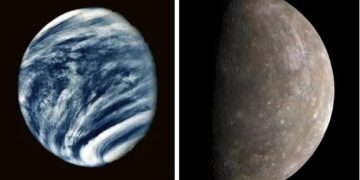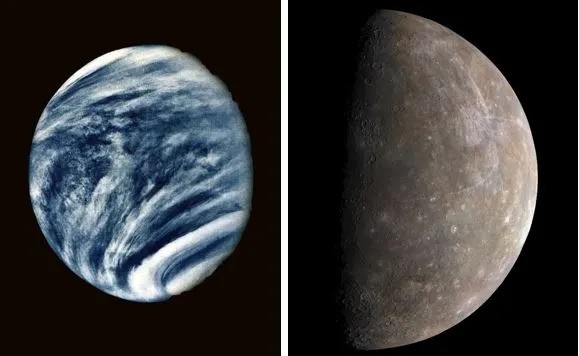In the ever-growing field of planetary exploration, a new challenge is emerging that has the potential to revolutionize our understanding of the solar system: returning samples from Mercury and Venus. These two planets—so close to the Sun and yet so poorly understood—represent the final frontiers for inner solar system geology.
Why We Need Samples from Mercury and Venus
The Earth, Moon, and Mars have all yielded samples either directly or indirectly. But Mercury and Venus remain geochemical mysteries. And this isn’t a minor gap in our planetary knowledge—it’s a fundamental blind spot that keeps us from fully understanding how the inner solar system formed.
Researchers emphasize that no meteorite ever found on Earth has been conclusively identified as coming from Mercury or Venus. This is in stark contrast to the thousands of Martian and lunar meteorites cataloged by scientists. Without physical pieces of Mercury and Venus, our understanding of the early solar system’s chemistry is inherently incomplete.
The study’s lead author, Tony Yap, a Caltech PhD candidate, points out that Mercury and Venus could hold the keys to solving one of cosmochemistry’s biggest puzzles: the missing ingredients in Earth’s formation. Current models that simulate the accretion of Earth from meteorites can’t fully recreate the planet’s exact elemental composition. That suggests that Earth may have formed from materials that are no longer accessible—or that still exist on Mercury and Venus.
Mercury: A Destination Worth the Difficulty
Sample return from Mercury is considered technically feasible, but extremely challenging. The main problem lies in Mercury’s position—the closest planet to the Sun. Getting to Mercury isn’t just a matter of flying inward; spacecraft have to fight against the Sun’s powerful gravity, which pulls them in faster and makes it hard to slow down for orbital insertion.
To solve this, the study recommends the development of nuclear thermal propulsion, an emerging technology that could provide the thrust and efficiency necessary for a round-trip journey. Unlike traditional chemical propulsion, nuclear thermal engines could cut down travel time and fuel requirements significantly, making it possible to land, collect, and return samples.
Once on Mercury, the lander would need to survive high surface temperatures (up to 430°C during the day) and carefully navigate rocky terrain. Even retrieving as little as one gram of material would be revolutionary—enough to answer huge questions about Mercury’s high iron content and how it compares to Earth’s core.
Venus: Our Hellish Twin with Hidden Potential
Venus presents an even greater challenge. Its surface is a hellscape of 465°C temperatures and atmospheric pressure 92 times that of Earth’s, enough to crush and melt most standard spacecraft within minutes. And yet, the planet is geologically active, Earth-sized, and may once have harbored oceans.
A direct surface sample return from Venus is, for now, unfeasible. However, the Caltech team offers a creative workaround: sampling the atmosphere instead.
The idea is to use balloon-based laboratories—floating robotic labs that operate in the upper atmosphere of Venus, where temperatures and pressures are relatively Earth-like. These balloon labs could analyze atmospheric particles, collect aerosols, and possibly deploy short-duration landers to grab samples from the ground before being pulled back up into the atmosphere.
Although atmospheric samples won’t offer the same depth of data as a surface rock, they could still provide invaluable insights into Venus’s volcanic activity, geochemical cycles, and even clues about ancient habitability.
Laying the Groundwork: Current and Upcoming Missions
While sample return may be a few decades away, today’s space missions are already laying the foundation for it.
For Mercury, NASA’s MESSENGER mission, which orbited the planet from 2011 to 2015, revealed surprising geological diversity and an unexpected presence of volatile compounds like sulfur and potassium. ESA and JAXA’s BepiColombo, which is en route to Mercury now and will arrive in 2025, is expected to provide even more detailed data on the surface and magnetosphere.
For Venus, NASA is preparing the DAVINCI mission, which will drop a probe into the planet’s thick atmosphere to analyze its chemical makeup. The VERITAS mission, also in development, will orbit Venus and map its surface in unprecedented detail using radar.
Pushing Technology to the Next Level
Achieving a sample return mission from Mercury or Venus means pushing several spaceflight technologies to maturity. The study highlights the importance of NASA’s Technology Readiness Level (TRL) system, which measures how close a technology is to being flight-ready.
For Mercury, nuclear propulsion is the biggest hurdle. It’s currently at a low TRL, but sustained investment could make it viable within a few decades. For Venus, the key lies in high-temperature electronics, pressure-resistant landers, and reliable balloon systems capable of controlled sampling operations.
There’s also a strong call to prioritize miniaturization. If just one gram of rock or dust can answer major scientific questions, then robotic sampling systems don’t need to be massive. Compact, precise, and autonomous technologies will make these missions not just feasible—but cost-effective.
The Bigger Picture: What We Gain from These Samples
These missions aren’t about ticking boxes—they could rewrite the story of the solar system. By analyzing samples from Mercury and Venus, we could:
- Understand why Earth has the composition it does.
- Test theories about how close-in planets form and evolve.
- Search for the inner solar system’s “missing” geochemical components.
- Identify volatile reservoirs that might affect planetary habitability.
They also pave the way for future sample returns from other hard-to-reach places, such as Io, Titan, or even the Sun’s corona via solar wind capture missions.
Just as Moon samples transformed geology in the 1970s and Mars samples promise to do in the 2030s, Mercury and Venus could hold the final clues we need to complete our planetary puzzle.
Conclusion: Eyes on the Inner Solar System
In a world where attention often turns to Mars, Europa, or Titan, this roadmap boldly redirects our gaze inward, toward the two worlds we’ve long ignored due to their difficulty.
Mercury and Venus are not just interesting—they are essential to understanding Earth’s story and the larger narrative of planetary formation. The roadmap laid out by Caltech researchers doesn’t just propose a mission; it proposes a new direction for planetary science—one that embraces ambition, ingenuity, and the spirit of discovery.



















